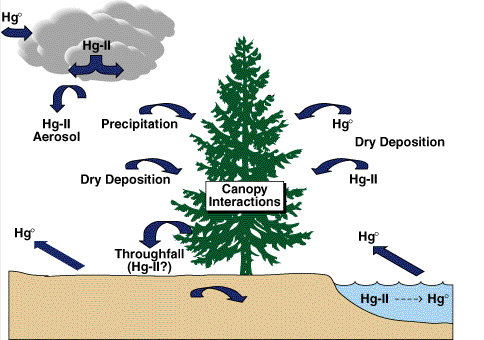


The atmosphere/surface exchange of mercury (Hg).

How does dry deposition contribute to the atmosphere/surface exchange of mercury in a forest, and could it be significant in the global metal cycle?

Wet deposition alone cannot account for all the mercury apparently accumulating in lakes in forested watersheds.
The atmospheric concentration of mercury vapor is strongly related to air temperature, suggesting the importance of surface soil emissions. A similar relationship exists between the dry deposition of mercury and air temperature; modeled dry deposition velocities increase with temperature because of the strong physiological control over the mesophyll pathway for uptake of mercury.
Dry deposition may be the dominant input process in a forest during the summer.
A general increase in global temperature would have profound implications for the global biogeochemical cycle of mercury, possibly resulting in increased rates of transfer of mercury from the geosphere to the biosphere.

Lindberg, S. E., T. P. Meyers, G. E. Taylor, R. R. Turner, and W. H. Schroeder. 1992. Atmosphere/surface exchange of mercury in a forest: Results of modeling and gradient approaches. Journal of Geophysics Research 97:2519-28.
Integrated Assessment Briefs. 1995. ORNL/M-4227. Oak Ridge National Laboratory, Oak Ridge, TN.